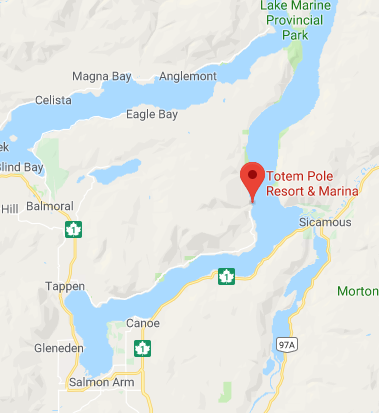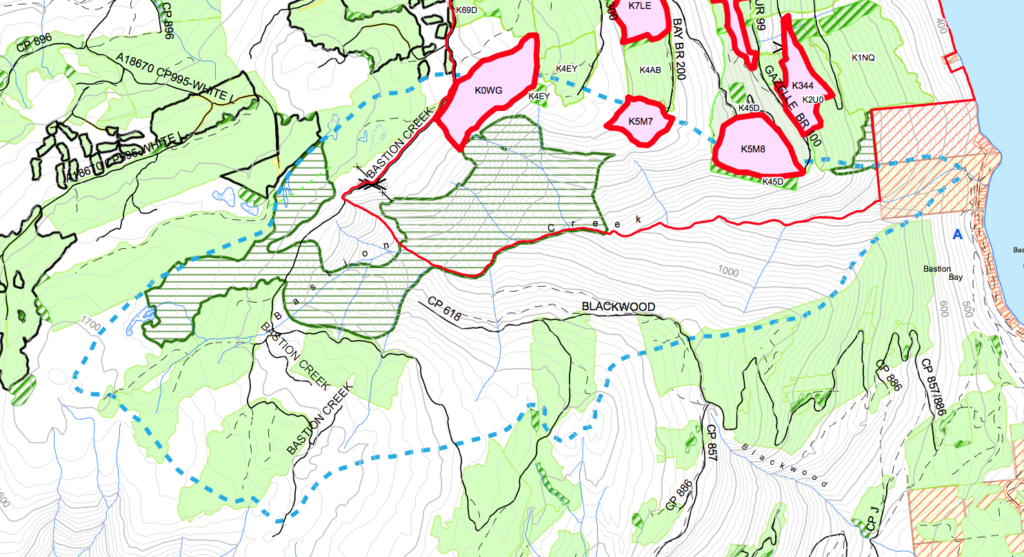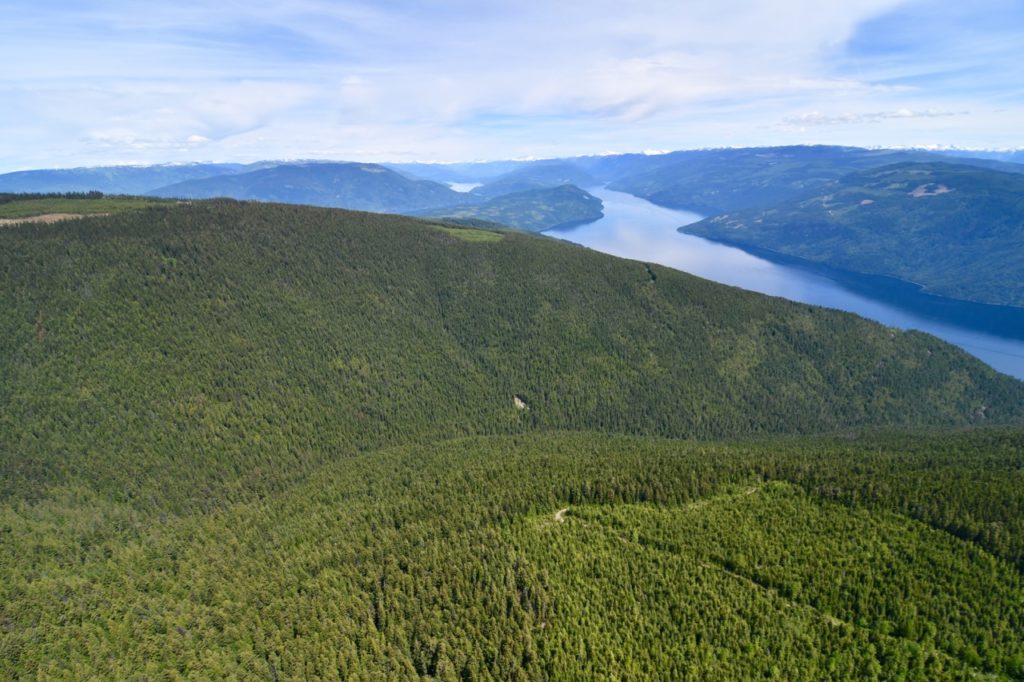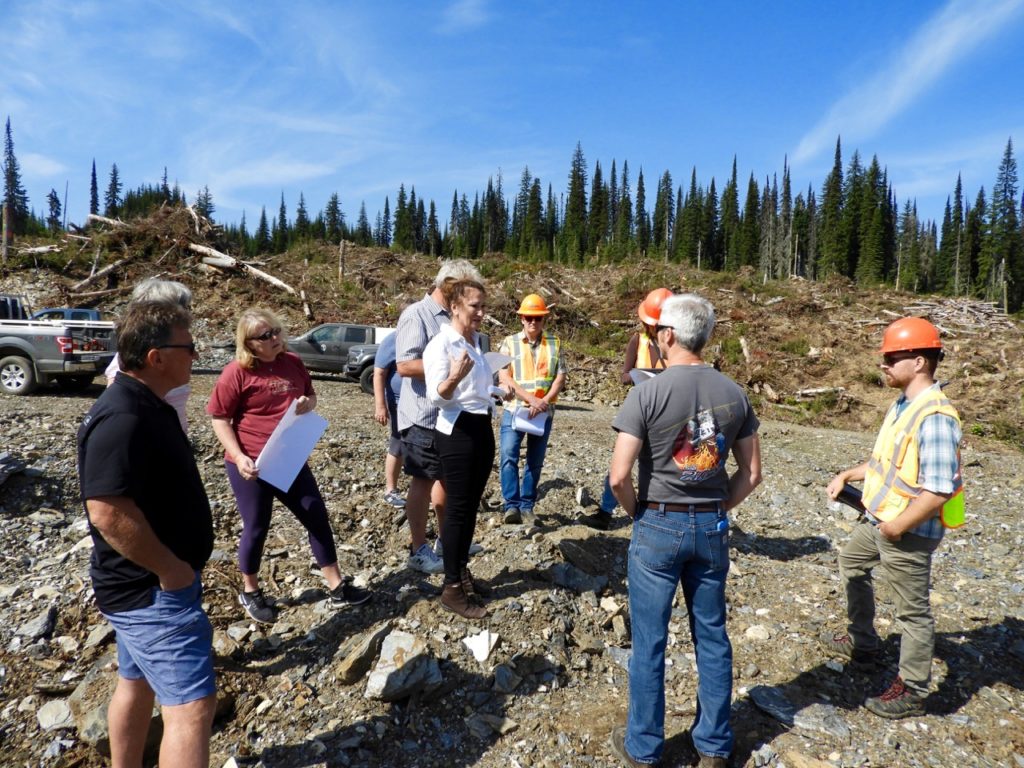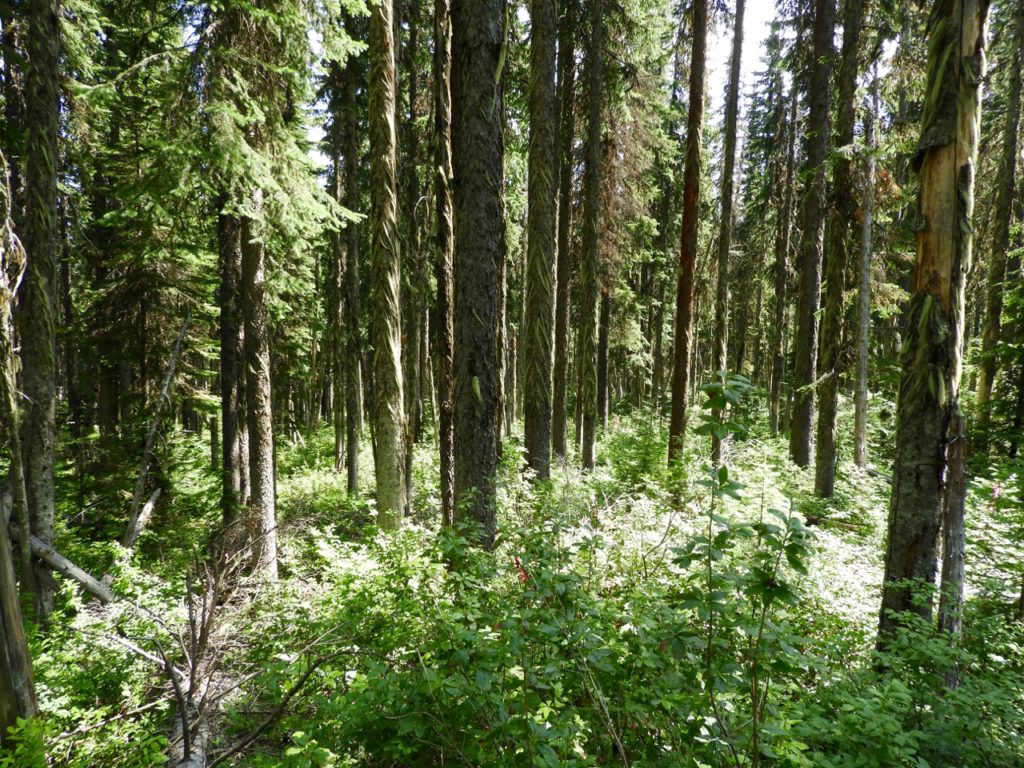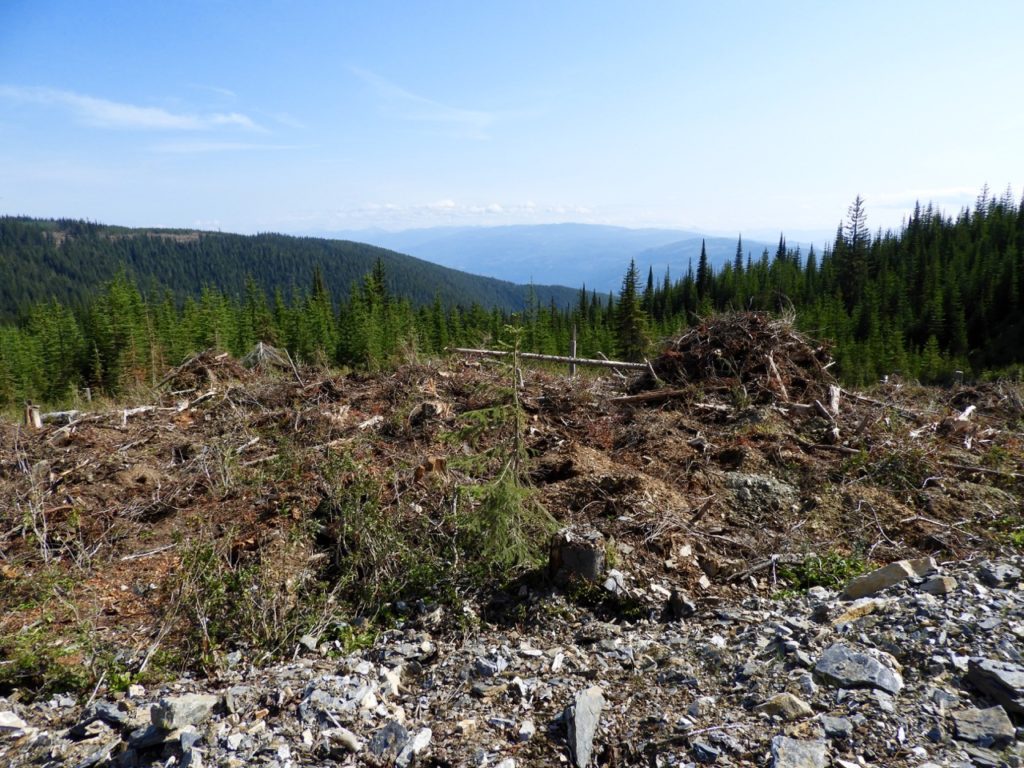 While this recently logged block poses few risks, logging proposed on the opposite hillside does
While this recently logged block poses few risks, logging proposed on the opposite hillside does
Across the province, watersheds are under assault by forestry operations as timber supplies dwindle and logging companies move into hillsides above communities. Excessive clearcutting in the upper watersheds above Grand Forks directly contributed to massive flooding in the community last spring, logging above Peachland resulted in excessive siltation in their drinking water thus forcing the community to build a 55-million dollar water treatment infrastructure and here in the Shuswap there have been countless landslides and debris torrents caused in part by logging and roadbuilding that have resulted in millions of dollars in damage and loss of life.
Early this January, I was asked to assist the Totem Pole Resort community, located on the Bastion Creek floodplain fan, with their response to logging plans for their community watershed by two licensees, Canoe Forest Products (Canoe) and BC Timber Sales (BCTS). Canoe’s blocks were located on the ridge far above the creek and did not appear to threaten the integrity of the watershed, whereas BCTS blocks pose great threats to terrain stability, water quality, and the safety of the residents.
The pink block on the left poses the greatest risks
When BCTS announced its revised schedule for the logging and asked for comments within two months, the issue became urgent. Years ago, I had urged the Totem Pole residents to get community watershed status to protect the quality of their drinking water, which they did. We successfully received this status for our local Corning Creek watershed in the 1990s, when detailed planning that involved local residents was a requirement. Consequently, I participated in the process that involved reviewing reports and analysis, which resulted in an inch-thick plan with detailed mapping.
Aerial photo of the Bastion Creek watershed where logging is proposed on this hillside, photo by Luke Gubbels
How times have changed! BCTS informed me that detailed planning is no longer required, but they did have a hydrological assessment that found negligible risks to the timing, quantity and quality of water in Bastion Creek from the proposed forest development. After requesting a copy of the report, I was shocked to learn that they have a policy of not sharing information like this with the public, but that I could read it in their Vernon office or at the Canoe office as the company paid half of the costs of the report.
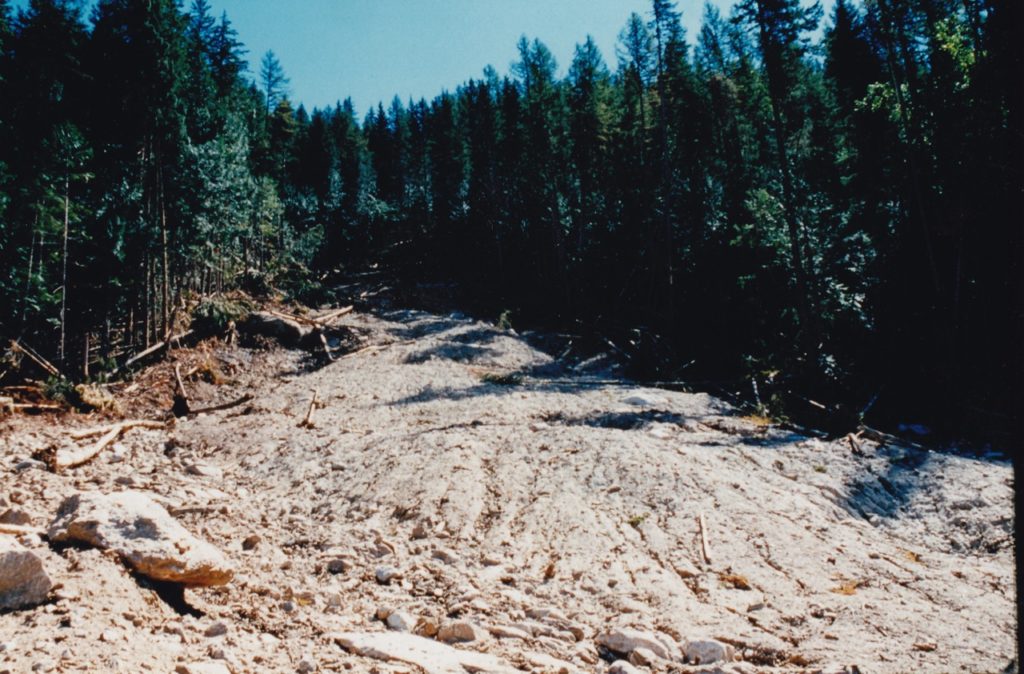 The 1997 Hummingbird Creek slide in 1997 above Mara Lake that resulted in one death
The 1997 Hummingbird Creek slide in 1997 above Mara Lake that resulted in one death
Here is the scenario I could visualize if the logging proceeded as proposed on the steep south face slope. After a winter with heavy snowpack and an early spring with hot weather, a heavy rain quickly melts the snow on the logged block next to a tributary of Bastion Creek causing erosion. The tributary gets blocked with debris, and when it releases it sends a debris torrent down to Bastion Creek, which temporarily dams the flow. When this dam breaks, a wall of water moves down the creek to the lake, wiping out homes and putting lives at risk.
We finally managed to get a copy of the 13-page hydrology report after requesting a copy through the Freedom of Information office in Victoria. While we thought the report should contain information we could use to get the plans rejected, the report was woefully inadequate and lacked key information. Fortunately, both the foresters’ and engineers’ professional organizations have also been concerned about the quality of hydrological assessments and recently prepared a new set of standards. Hopefully, BCTS will scrap their plans and report and have a new assessment prepared using the current, 72-page long professional standards.
POSTSCRIPT
When we finally received the hydrological assessment, it had one sentence redacted. I managed to copy that sentence from a hard copy of the report that I could read but not keep. Here is that sentence: “For these reasons, lower Bastion Creek is considered to be a high risk area naturally and as a result both BCTS and CFP should minimize incremental effects of their activities on the frequency and magnitude of flood events and landslide initiations.” The reasons are described in this previous sentence: “Both flooding and debris flow events can result in damage to private property and represent a potential threat to public safety.” They left the sentence out because they feared we would misconstrue it in the media!
On August 1, Totem Pole Resort residents and myself went on a field trip to view the area organized by Canoe Forest Products. We stopped to check out a cutblock at the top of the watershed that was logged last winter. It is fairly high elevation, with spruce and balsam and very rough ground. Below the block was a plantation that was logged approximately 30 years ago and appears to be well stocked with young trees.
The forest of balsam and spruce that BCTS wants to log
We then drove to the area across the valley that BCTS proposes to log in a few years. The quality of the timber looks poor, with small stems and about 50% low value balsam. It seems like they are willing to risk causing extensive damage to the watershed in return for some low value timber.
The CSRD is also concerned about the risks to life and property from logging in the area. In April they released a geomorphic study that they had commissioned. From their press release:
Some of the recommendations include developing an acceptable and tolerable level of risk for both proposed and existing developments. Simon Gautschi from Westrek, noted most local governments in BC do not have these types of risk thresholds, so standards for these risk levels would have to be developed by the CSRD. Additional assessments are also recommended for areas with logging or which have been affected by wildfire, as this can increase the potential for landslides. It was also recommended that all creek fan areas identified in the report be designated as Development Permit Areas within the CSRD.
As a result of the study, the following month this motion which was unanimously approved at the May 16th CSRD Board meeting:
“That the Board send a letter to the Minister of Forests, Lands, Natural Resource Operations and Rural Development, appropriate senior staff within FLRNORD and BC Timber Sales (BCTS) to express the CSRD;’s strong concerns and to request a temporary logging moratorium in the proposed cutblocks in the Bastion Creek area in view of the Westrek report of November 2017 which recommended that “A regional landslide hazard and risk study should be completed by government stakeholders for the slopes that extend from Sunnybrae to Bastion Creek to determine if there are common factors and issues. In the interim, it is recommended that the CSRD consider restricting or managing future development and re=-development on these slopes until the landslide hazard and risk to each property is more clearly understood.”
